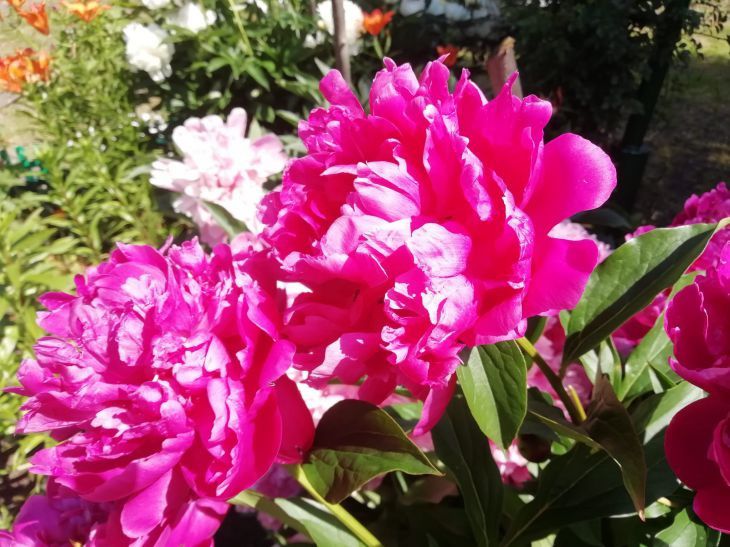How and what to fertilize peonies with: secrets of lush flowering
In order for peonies to delight you with their flowering, they need to be fertilized correctly.
The correct approach to fertilization guarantees not only abundant flowering, but also plant health.
Useful recommendations on this issue were shared by the expert of the online publication "BelNovosti", scientist-agronomist and landscape designer Anastasia Kovrizhnykh .
Choosing Fertilizers for Peonies
The choice of fertilizer is a key point in caring for peonies. Organic fertilizers such as compost and humus are ideal.
These substances provide plants with all the necessary nutrients.

Nitrogen, phosphorus and potassium are the main macronutrients required by peonies.
In spring, before active growth begins, nitrogen fertilizers should be used to promote the growth of green mass.
During the period of budding and flowering, it is necessary to increase the proportion of phosphorus and potassium.
Fertilizer application periods
Peonies should be fertilized several times a year. The first feeding is done in early spring, when the first shoots appear.
At this time, plants need nitrogen to stimulate active growth.
The second feeding is during the period of bud formation. Here, the main attention is paid to phosphorus and potassium, which contribute to the formation of flower buds and abundant flowering.
The third feeding is carried out after flowering. During this period, it is important to support the plant so that it gains strength for wintering.
Potassium-phosphorus fertilizers are used, which strengthen the root system.
Fertilizer application methods
Fertilizing methods for peonies also have their own characteristics.
In spring and summer, fertilizers are applied to the soil around the bush, trying not to touch the roots.
In autumn, you can use the method of surface scattering of fertilizers so that they gradually penetrate the soil with rain and melting snow.
It is important to remember that over-fertilization can harm plants, so the dosage should strictly follow the recommendations on the fertilizer packaging.
Organic and mineral fertilizers
The use of organic fertilizers such as compost and humus provides gradual and uniform nutrition.
Organic and mineral additives play an important role in increasing soil fertility.
Organic matter such as compost and humus improves the structure of the soil, increases its porosity, promoting moisture retention and increasing its aeration capacity.
Mineral fertilizers containing macronutrients such as nitrogen, phosphorus and potassium provide plants with rapid absorption of nutrients, but require precise dosing to prevent negative effects on the soil.
Excessive amounts of minerals can cause root burns and deterioration of the plant.
Peony care after fertilization
After applying fertilizer, it is necessary to water regularly so that the nutrients reach the roots faster.
It is important to maintain moderate soil moisture, avoiding both drying out and stagnant water.
Dry soil prevents plants from absorbing fertilizers, and excess moisture can cause root rot.
Peonies need balanced watering, especially during the period of active growth and flowering.
Signs of deficiency and excess of fertilizers
Peonies can signal a lack or excess of fertilizers.
Yellow leaves and poor growth indicate a nutrient deficiency, while brown spots and dry leaf edges indicate too much fertilizer.
Regular monitoring of the condition of plants allows you to promptly adjust the dosage of fertilizers and avoid problems.
Preparing for winter
Preparing peonies for winter is an important stage of care.
At the end of the season, after flowering, the last fertilization with potassium-phosphorus fertilizers is carried out.
This helps strengthen the root system and prepare plants for the cold weather.
In autumn, it is also recommended to mulch the soil around the bushes with peat or humus, which provides additional nutrition and protects the roots from frost.
Earlier we told you which vegetables should not be planted next to an apple tree.
